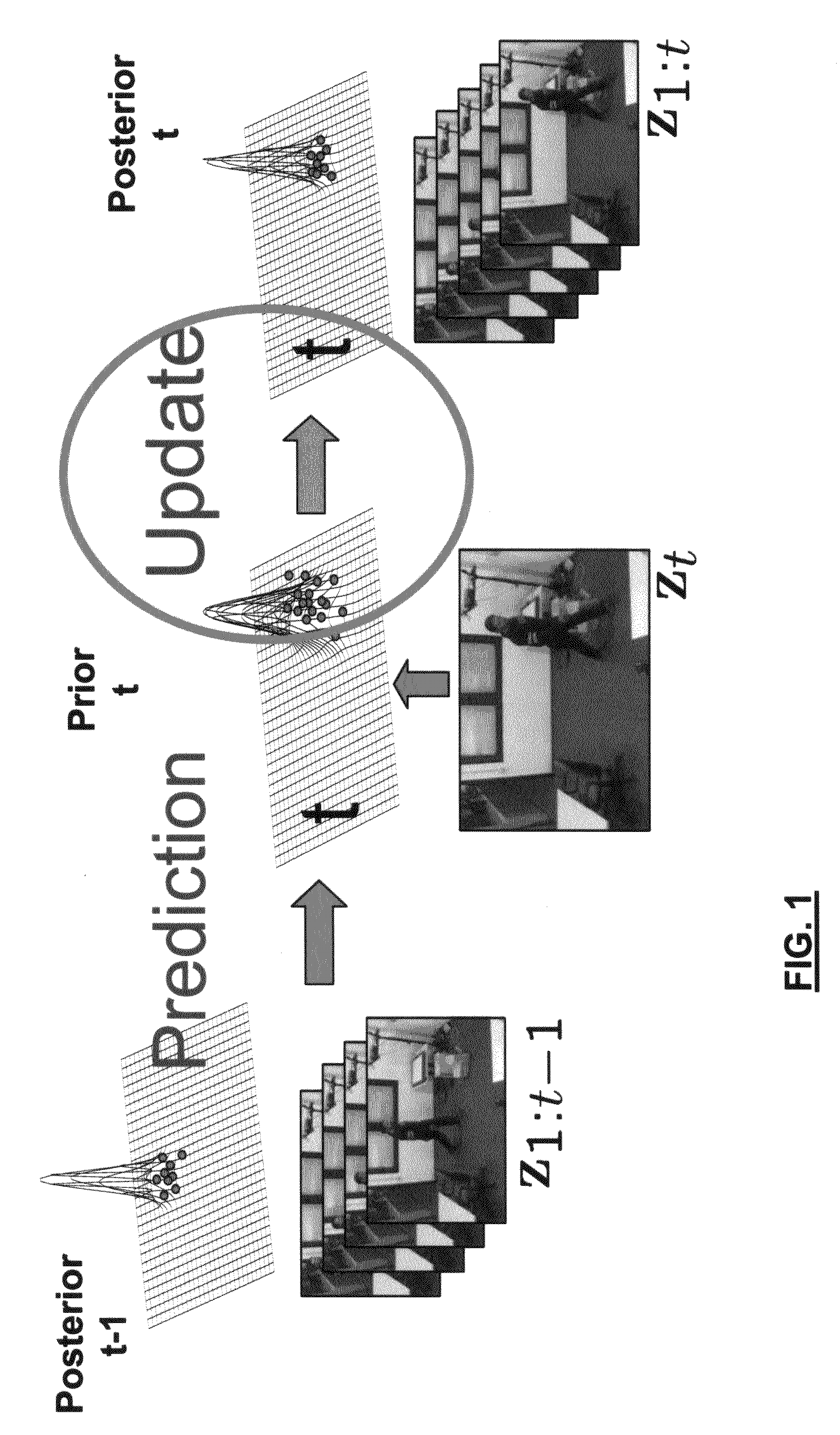Method and apparatus for tracking a number of objects or object parts in image sequences
- Summary
- Abstract
- Description
- Claims
- Application Information
AI Technical Summary
Benefits of technology
Problems solved by technology
Method used
Image
Examples
Embodiment Construction
[0035] The present invention is about a new functional routine which computes the update step of a multi-body / multi-part Bayes filter (or any approximate implementation of it including, but not limited to, Kalman Filter, Particle Filter, Markov Chain Monte Carlo (MCMC) Filter, PhD Filter, Rao-Blackwellised Particle Filter, Grid Filter, Kernel Filter, Belief Propagation, Non-parametric Belief Propagation, PAMPAS, etc.): [0036] for a specific, approximate, representation of target configuration distribution; [0037] using a specific form of visual likelihood that implements the visual occlusion process, which however is completely generic w.r.t the type of image cues used (including, but not limited to, image gradients, edges, color, optical flow, motion layers, texture, wavelets, feature points, etc., or any combination of them); and [0038] built upon an explicit shape model of the target(s).
[0039] In the following each of the above items is specified rigorously, build upon an explic...
PUM
 Login to View More
Login to View More Abstract
Description
Claims
Application Information
 Login to View More
Login to View More - R&D
- Intellectual Property
- Life Sciences
- Materials
- Tech Scout
- Unparalleled Data Quality
- Higher Quality Content
- 60% Fewer Hallucinations
Browse by: Latest US Patents, China's latest patents, Technical Efficacy Thesaurus, Application Domain, Technology Topic, Popular Technical Reports.
© 2025 PatSnap. All rights reserved.Legal|Privacy policy|Modern Slavery Act Transparency Statement|Sitemap|About US| Contact US: help@patsnap.com



